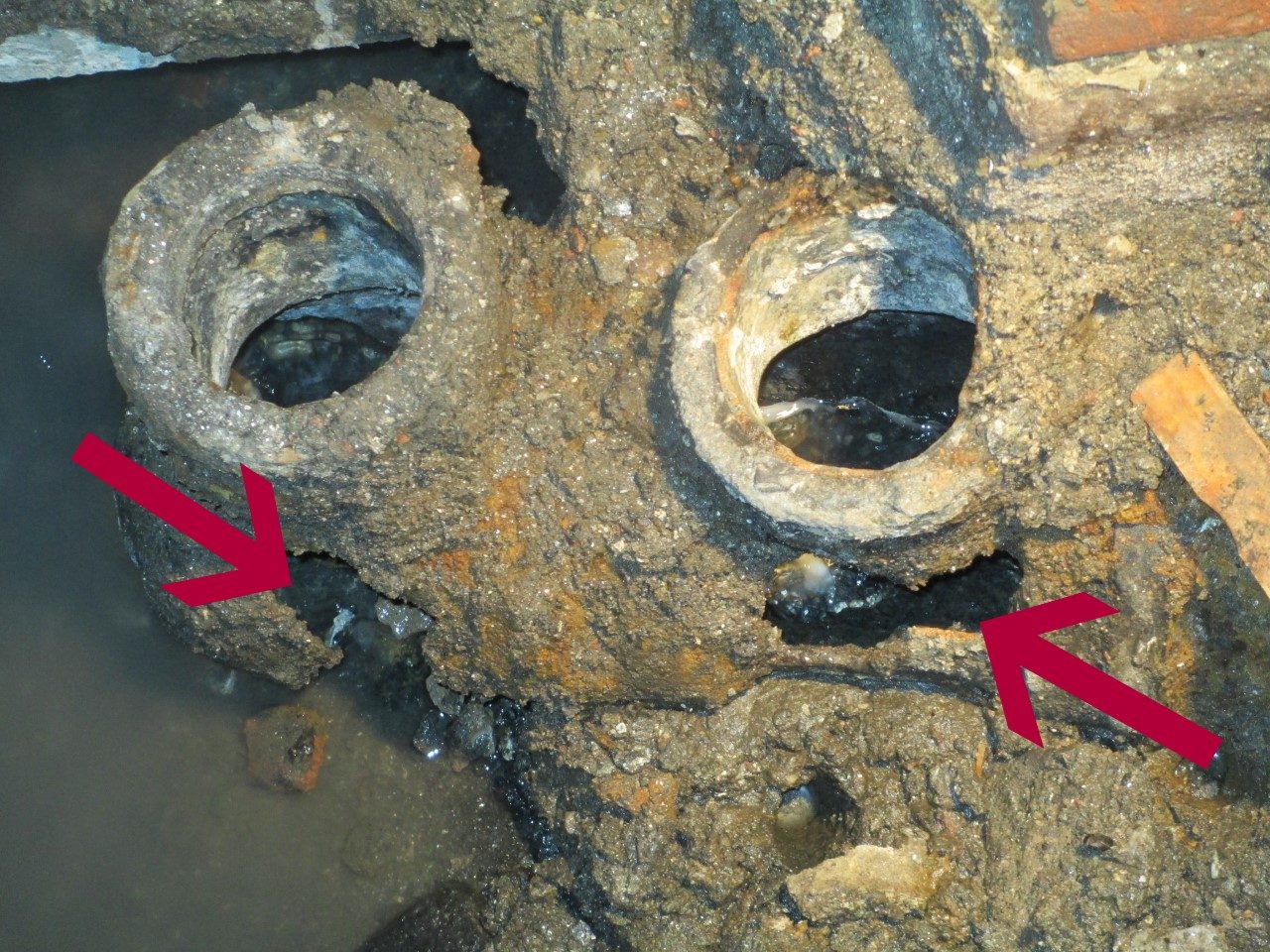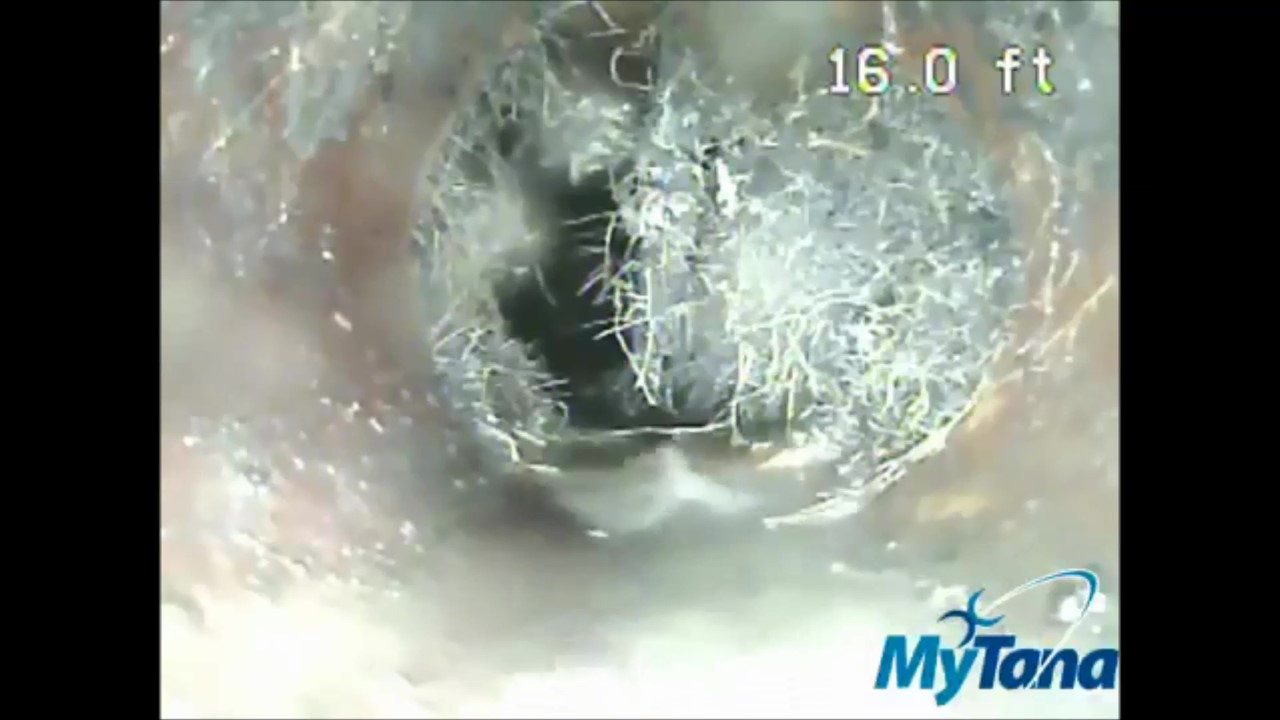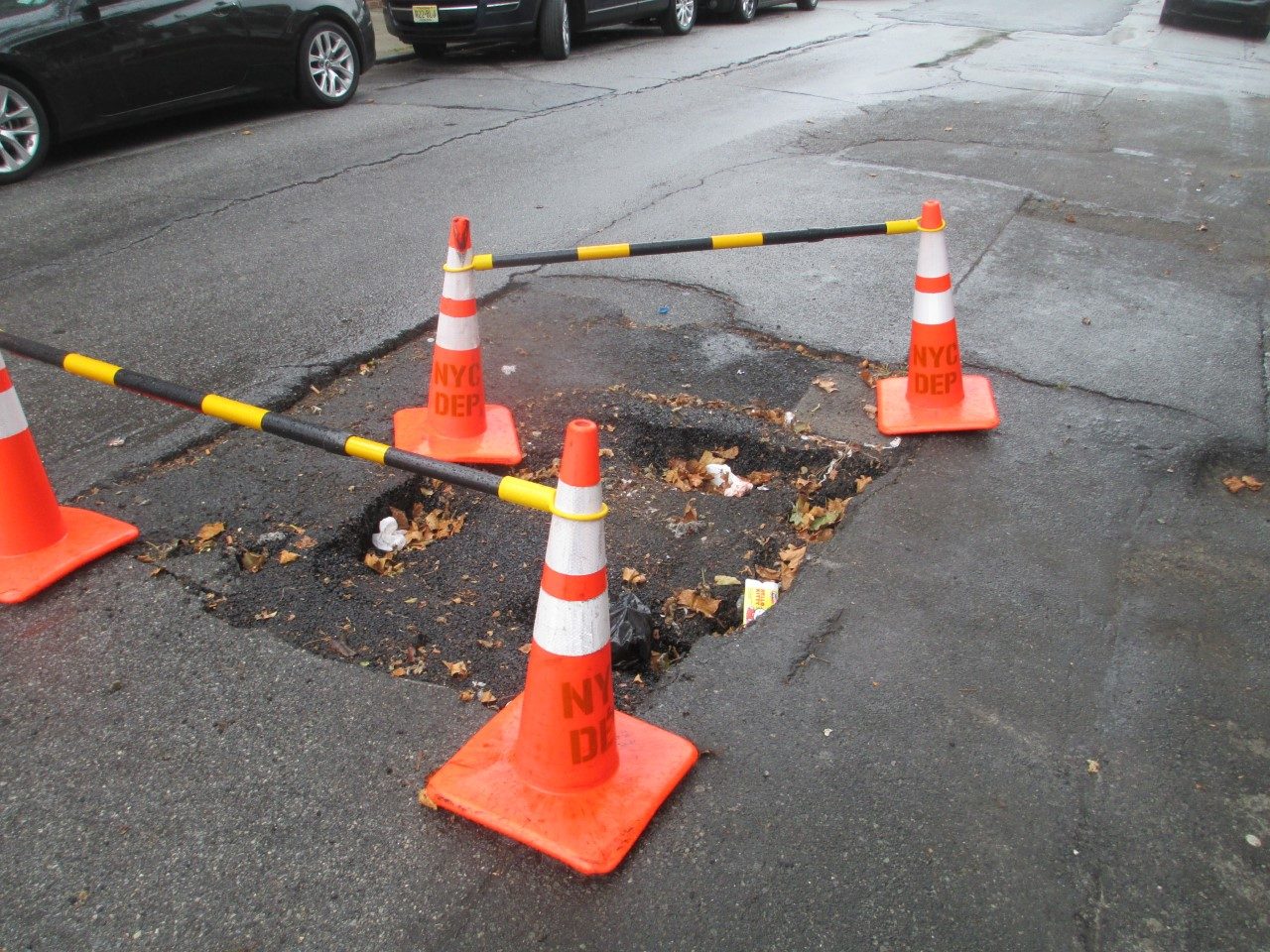Most homeowners will continue to clear their sewer line just to avoid the possibility of a main sewer line replacement. However, it is important to consider the cost of cleaning the sewer line three to five times per a year vs. the cost of repairing or replacing your damaged sewer pipe. Most homeowners are surprised how much money they may have wasted over the years just to avoid facing the facts.
Sewage backup
If your sewer is backing up more than once per year, it is suggested to evaluate the overall condition and functionality of the sewer line out to the street. Your sewer line is supposed to function on gravity with no disturbance. In most cases, a fully functional sewer line does not require clearing or cleaning.
If you find yourself cleaning the sewer more than once per year, it is suggested to have a licensed plumber perform a detailed inspection—including inserting a camera in your sewer line. The trained professional will analyze the video and make relevant suggestions specific to your main sewer line replacement as needed. It is also important to make sure that you can obtain a copy of the camera inspection for your personal records. If you are required to obtain a secondary inspection down the road you may want to compare the original video and observe any changes that may be causing the continuous backups.
Unusual noise near your sewer trap
For the most part, the location of your sewer trap should remain relatively quiet, you may hear a slow stream of sewage passing but nothing more than that. If you start to hear what sounds like a gurgling noise, the sewer is not flowing smoothly and at some point, the flow is being interrupted. This noise is not usually related to a backup. In most cases gurgling or other odd noises usually pointing towards a more severe problem.
The gurgling noise may be a result of a broken pipe. The sewage is getting backed up in the location of the break and slowly seeping into the surrounding earth as it attempts to travel out to the city sewer system. A broken sewer line can be picked up by a camera inspection and would be included in the final report.
Tree roots
If your sewer cleaner is pulling tree roots out of your sewer line, you should be aware that a sewer replacement will be required at some time in the future. This does not mean you must go out and replace the sewer the very next day, but you should be aware that roots have penetrated your pipe and the situation is not going to get any better.
Once roots have entered the sewer line, they will continue to grow and create clogs. As a result, toilet paper and other materials will continue to get caught on the roots which will result in a backup. It is suggested that you go on a sewer maintenance program if you have become aware of root intrusion to avoid the roots from growing extremely thick and dense. At some point, the roots will grow to a point where they cannot be removed from the sewer. If this happens, you will need an emergency sewer line repair to prevent further damage.
If you plan on entering a maintenance plan, sewer cleaners will often use a sewer snake with a blade on the end in order to eliminate as much of the roots as possible. If you continue to have backups, it is suggested to utilize a water jet, which will attempt to remove the tree roots with water pressure. There are several kinds of water jet machines which may vary in pressure, type of head where the water is released, and volume of water used.
Slow draining sewer
You may become aware of a slow draining sewer after experiencing a sink or toilet taking longer than normal to drain. It is up to the plumber to determine if this problem is isolated to the sink or toilet itself, or if it is a byproduct of a problem with the main sewer line.
If you are lucky, the problem is a minor clog at the fixture itself and can be cleared within a few minutes. If the problem persists, the plumber will continue to work his or her way towards the front of the house where the sewer line exits towards the street. At this point, they should begin evaluating the main sewer line as noted in the above steps. If the line is not full of water, a trained professional should be able to identify the issues quickly with the assistance of a sewer camera. If the sewer line is full of water, the plumber must figure out how to get the water down even if on a temporary basis. This may require closing the water for the entire house, forcing the snake into the sewer until the water goes down, and at this point inserting the camera.
The plumber may also use CO2 to assist with forcing the water out of the pipe before the camera can be utilized. The CO2 will serve as a pressurized air burst to blow out the water until the sewer is used again.
Bad odor
Funk odors are probably the first and most common sign of a sewer problem. The explanation is pretty straight forward as you should never smell any form of sewage in your home. A functional sewer system is setup to catch all of the sewer gases at the main house trap, which is the reason for the curved section on the bottom of the trap.
If you continue to smell a terrible odor, it is strongly suggested to call a professional sewer cleaner and hope that the lined can be quickly cleared with a standard sewer snake. In most cases if you have begun smelling sewage, there is a good chance that you are experiencing a larger problem than a standard sewer clog which must be further evaluated.
Mold in the basement
If you are actively using your basement or the area that holds the sewer trap, you are probably questioning how someone would allow to let mold form on the walls or the floor. For example, if the sewer trap is in your basement, you would become aware of mold and address it quickly.
Some people never utilize this area of the house and the mold from the sewer backups will build up over time. The mold in this form represents continuous sewer backups and should be diagnosed by a professional to determine the exact cause.
Sinkhole in the property or street
If you have become aware that a sinkhole in front of your home is a result of your broken sewer line, it is time to act fast! If the sewer problem has progressed so far as to create a sinkhole, it is guaranteed the sewer pipe is cracked or broken. The sewage escaping through these holes is causing the grounds to undermine.
The biggest issue with a sewer sinkhole is that the property is near a complete sewer line failure. At this point, homeowners are not able to use the sewer system at all.
In most cases, the owners or tenants must move out of the house until the pipe is replaced. For this reason, it is suggested to act quickly when you identify that there is a sinkhole in front of your home. Even if you feel that it may not be your sewer line, it is suggested to contact a professional to avoid any major damage to your property or harm to others.























